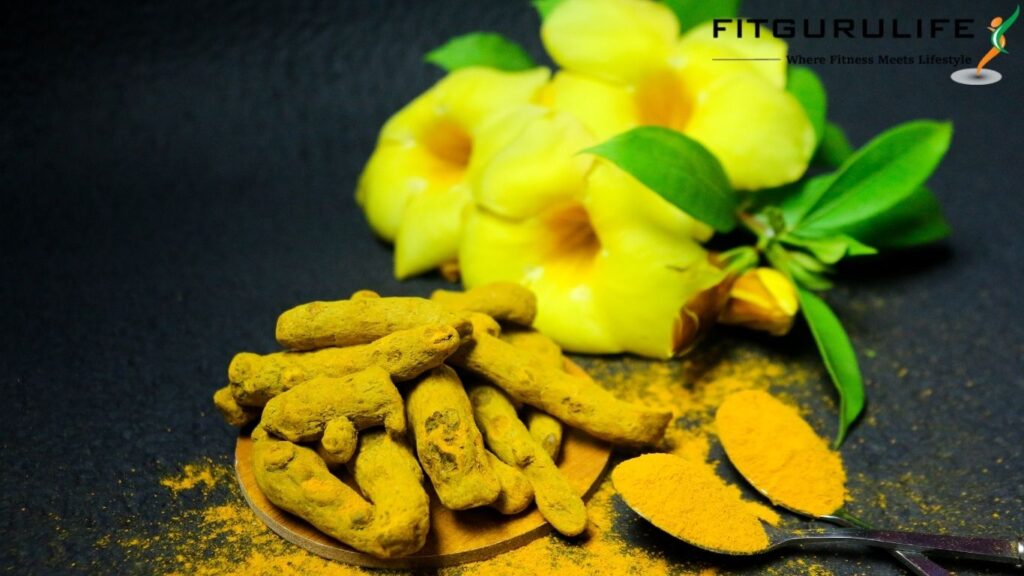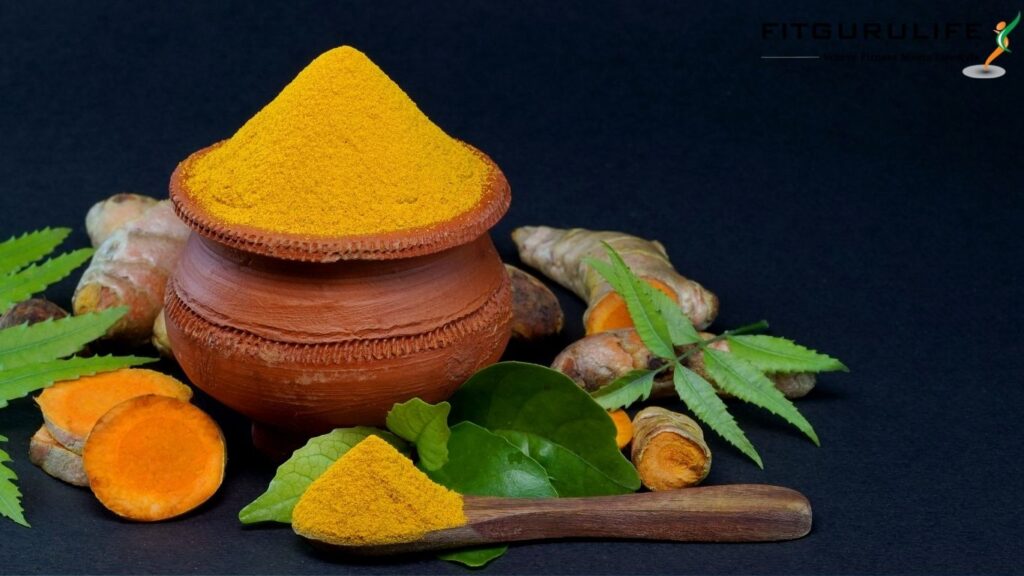In the world of herbs and spices, turmeric stands out not only for its vibrant color and distinct flavor but also for its remarkable health benefits. This ancient spice, often referred to as the “Golden Spice,” has been cherished for centuries in traditional medicine and culinary practices. One of its most celebrated attributes is its potent antioxidant properties, primarily attributed to its active compound, curcumin. In this comprehensive exploration, we will unlock the potential of turmeric as a powerful antioxidant herb and delve into its multifaceted role in promoting health and well-being.
Turmeric: A Brief Introduction
Before we dive into the world of turmeric’s antioxidants, let’s begin with a brief introduction to this incredible herb. Turmeric, scientifically known as Curcuma longa, is a flowering plant belonging to the ginger family, Zingiberaceae. Native to South Asia, particularly India, turmeric has been an integral part of both traditional Ayurvedic and Chinese medicine systems for thousands of years.
The most striking feature of turmeric is its deep yellow to orange color, which imparts a distinctive hue to dishes and textiles alike. In culinary applications, it is a staple ingredient in curries, soups, and rice dishes, providing both flavor and color. Beyond its culinary uses, turmeric has been revered for its therapeutic properties.
Curcumin: The Jewel in Turmeric’s Crown
Turmeric’s therapeutic potential is largely attributed to its bioactive compound, curcumin. Curcumin is a polyphenolic compound with powerful antioxidant, anti-inflammatory, and anti-cancer properties. It is responsible for the bright yellow color of turmeric and is found in the rhizomes of the plant.

Antioxidant Properties of Curcumin
One of the primary reasons curcumin has garnered significant attention in the world of health and wellness is its exceptional antioxidant activity. Antioxidants are substances that help protect the body from oxidative stress and the damage caused by free radicals. Free radicals are unstable molecules that can harm cells, proteins, and DNA, contributing to various chronic diseases and the aging process.
Curcumin’s antioxidant properties come from its ability to neutralize free radicals and boost the activity of the body’s own antioxidant enzymes. It achieves this by donating electrons to stabilize free radicals, preventing them from causing cellular damage. Here’s how curcumin acts as a potent antioxidant:
- Scavenging Free Radicals: Curcumin can effectively scavenge a variety of free radicals, including reactive oxygen species (ROS) and reactive nitrogen species (RNS), which are known culprits in oxidative stress-related diseases.
- Enhancing Enzymatic Antioxidants: Curcumin stimulates the activity of natural antioxidant enzymes in the body, such as superoxide dismutase (SOD), catalase, and glutathione peroxidase. These enzymes play a crucial role in protecting cells from oxidative damage.
- Chelating Metal Ions: Curcumin can chelate metal ions like iron and copper, which are involved in the production of harmful free radicals. By binding to these metals, curcumin helps prevent their participation in oxidative reactions.
Health Benefits of Turmeric as an Antioxidant Herb
The antioxidant properties of turmeric and curcumin have a profound impact on various aspects of health and well-being. Let’s explore some of the remarkable health benefits associated with the consumption of turmeric as a potent antioxidant herb:
1. Anti-Inflammatory Effects
Chronic inflammation is a common underlying factor in many chronic diseases, including heart disease, cancer, and neurodegenerative conditions. Curcumin’s potent anti-inflammatory properties help reduce inflammation by inhibiting the activity of inflammatory molecules in the body. This can potentially alleviate symptoms of inflammatory conditions like arthritis and irritable bowel syndrome.
2. Cardiovascular Health
Oxidative stress and inflammation play a significant role in the development of cardiovascular diseases. Turmeric’s antioxidant and anti-inflammatory effects may contribute to heart health by improving blood vessel function, reducing cholesterol levels, and lowering blood pressure.
3. Joint Health
Individuals suffering from joint pain and arthritis often turn to turmeric as a natural remedy. The anti-inflammatory and antioxidant properties of curcumin may help alleviate joint pain and stiffness, enhancing overall joint health.
4. Cognitive Function
Emerging research suggests that curcumin may have neuroprotective properties. It can cross the blood-brain barrier and potentially help combat oxidative damage and inflammation in the brain, which are implicated in neurodegenerative diseases like Alzheimer’s and Parkinson’s.
5. Gastrointestinal Health
Turmeric has a long history of use in traditional medicine for digestive issues. Its antioxidant and anti-inflammatory properties may be beneficial for individuals with conditions like irritable bowel syndrome (IBS) and inflammatory bowel disease (IBD).
6. Skin Health
The antioxidant properties of turmeric can benefit the skin by protecting it from oxidative damage caused by UV radiation and pollution. Some people use turmeric topically as a face mask to achieve a healthy, glowing complexion.
7. Cancer Prevention
While more research is needed, preliminary studies suggest that curcumin may have anticancer properties. Its ability to inhibit the growth of cancer cells and interfere with the development of tumors is an area of active investigation.
8. Antioxidant Support for Diabetes
Diabetes is associated with increased oxidative stress. Curcumin’s antioxidant properties may help mitigate oxidative damage in diabetic individuals, potentially improving overall health outcomes.

Incorporating Turmeric into Your Diet
Harnessing the antioxidant benefits of turmeric is relatively easy, thanks to its versatility in the kitchen. Here are some delicious ways to incorporate turmeric into your daily diet:
1. Golden Milk: This traditional Indian drink combines turmeric with milk (or dairy-free alternatives), honey, and spices like cinnamon and black pepper for a warming and soothing beverage.
2. Turmeric Lattes: Turmeric lattes, also known as “turmeric latte” or “golden latte,” have gained popularity in recent years. They typically feature a blend of turmeric, milk (or plant-based milk), and sweeteners like honey or maple syrup.
3. Curry Dishes: Turmeric is a staple in curry powder, lending its distinct flavor and color to curry dishes. Whether you’re cooking vegetables, chicken, or lentils, adding turmeric can enhance both taste and nutrition.
4. Smoothies: A pinch of turmeric can be added to your morning smoothie for a healthful boost. Combine it with fruits, greens, yogurt, and other superfoods for a nutrient-packed drink.
5. Salad Dressings: You can create turmeric-infused salad dressings by blending it with olive oil, lemon juice, honey, and your favorite herbs and spices.
6. Turmeric Supplements: If you find it challenging to incorporate turmeric into your meals, consider turmeric supplements, which provide a concentrated dose of curcumin.
Cautions and Considerations
While turmeric is generally safe for most people when consumed in moderate amounts as a spice, there are a few considerations to keep in mind:
- Curcumin Absorption: Curcumin has low bioavailability on its own. To enhance its absorption, consume turmeric with a small amount of black pepper, which contains piperine. Piperine can significantly improve curcumin absorption in the body.
- Interactions with Medications: Turmeric supplements, especially in high doses, may interact with certain medications, such as blood thinners and drugs for diabetes. If you’re taking medication, consult your healthcare provider before adding turmeric supplements to your regimen.
- Allergic Reactions: Some individuals may be sensitive or allergic to turmeric. If you experience any adverse reactions, discontinue use and consult a healthcare professional.
- Pregnancy and Breastfeeding: Pregnant and breastfeeding women should exercise caution with turmeric supplements, as their safety during these periods has not been thoroughly studied.
- Staining: Turmeric can stain clothing, cookware, and countertops, so handle it with care and be mindful of its vibrant color.

Conclusion
Turmeric, with its active compound curcumin, is indeed a potent antioxidant herb with a wide array of health benefits. From reducing inflammation to promoting heart health and potentially aiding in cancer prevention, its versatile applications make it a valuable addition to any diet.
While turmeric’s culinary uses are well-known, its potential as a natural remedy for various health conditions continues to be an area of active research. However, it’s important to consume turmeric in moderation and be aware of potential interactions with medications.
Incorporating turmeric into your daily routine, whether through delicious recipes or supplements, may help you unlock its full potential as a powerful antioxidant herb and contribute to your overall health and well-being. As always, it’s advisable to consult with a healthcare professional before making significant changes to your diet or supplement regimen, especially if you have underlying medical conditions or are taking medications.
In the grand tapestry of herbs and spices, turmeric shines as a true gem—a testament to the ancient wisdom of herbal medicine and a gift from nature that continues to offer its golden benefits to the modern world.
So, why wait? Start exploring the world of turmeric today and embrace its potential to enhance your health and vitality.
Also read: Foam Rolling and Stretching: The Ultimate Guide to Easing Muscle Sorenesshttps://fitgurulife.com/2023/10/21/foam-rolling-and-stretching-the-ultimate-guide-to-easing-muscle-soreness/
